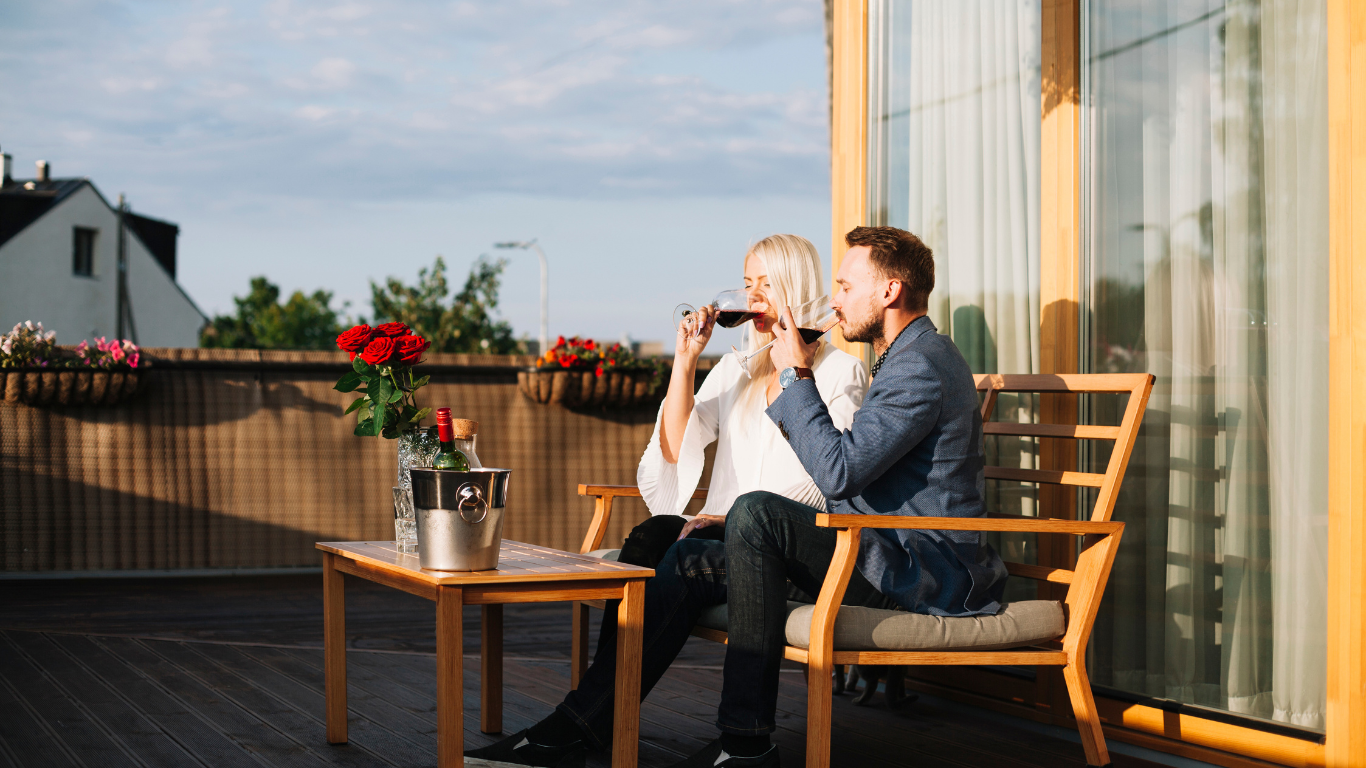Lifestyle changes over time, but so do trends. And both factors can be key for any business.
| The Deck & Patio Construction industry in the U.S. is projected to be approx. $1.3 billion (USD) in 2025, up from the $892.9 million evaluation in the previous year. – IBISWorld The global ‘outdoor deck and patio’ market was valued at approx. $15.7 billion (USD) in 2024. – Congruence Market Insights North American accounts for over 45% of the global ‘Outdoor deck and patio’ market share in 2025. – Verified Market Reports |
Outdoor living used to be limited mostly to the summer period, but with remote working and people staying at home more, lots of homeowners started seeking flexible/versatile outdoor spaces, patios, and decks intended for relaxing, dining, and even (remote/hybrid) working.
This shift not only boosts property valuation but also positively affects long-term homeowner equity.
The new ‘outdoor economy’ now affects numerous industries (e.g., real estate, builders, manufacturers, material suppliers, smart tech developers, etc.), all of which are competing to meet the demand of four-season home design.
Sustainability and Comfort
For a business, it’s crucial to follow trends, bringing security and comfort to outdoor spaces with the right durable and low-maintenance materials.
Treated wood, weatherproof fabrics, and composite decking are just some examples that allow space to stay aesthetic through weather changes, strong sunlight, rain, or snow.
When it comes to materials that are long-lasting, it’s important to look out for the environment as well. Many of these are recycled or made from sustainable sources. Quality materials and environment-conscious design can turn any deck or any patio into multi-season living areas that combine outdoor space with indoor.
Because of these new challenges, innovations are being driven to better themselves across the entire construction material industry.
Suitability is becoming key in outdoor design choices, and businesses that opt to adapt early are likely to come out on top – especially as consumer preferences evolve/change. And this has most to do with how different regions have to deal with different outside issues.
Here’s a quick comparison to show why:
A deck builder West Chester PA residents rely upon would use materials that can deal with year-round high moisture levels, plus the materials must not get damaged by freeze-thaw cycles during winter. On the other hand, a deck builder in Phoenix, AZ, will prioritize UV resistance and heat management (especially during intense summers) because being outside, let alone working, would otherwise be impossible.
How to Transform Outdoor Space All Year Long?
- Good Planning – Focus is on how to plan and what to install. What does that space represent, and how can it be used functionally? What activities can be done in different seasons and how?
Structured planning helps control project budgets and timelines, both of which are important to homeowners AND contractors.
- Different Seasons – Outdoor spaces are used in different seasons, cold winter mornings, or summer evenings with a warm breeze. It brings to the point when and during which period of the day or year it is for use. Make it lifestyle-focused.
This type of forecasting is now an integral part of any design consultation for businesses.
- Maintenance – taking good care of the material to last all year(s) long. Cleaning, protecting wood, winter prep, and many other good maintenance work bring longer durability. It’s all about sustainability with suitable materials.
From a business standpoint, maintenance services are starting to look like a solid opportunity for recurring revenue.
- Combine The Space – Outdoor can be integrated with indoor living. For example, the kitchen can be connected to the patio. Home-cooked food can taste even better on a patio with loved ones. Living room to deck can bring so many great game nights or casual get-togethers.
All these points point to an abroad architecture/real estate trend where open-concept and hybrid layouts are favorable.
- Personal Touch – Giving its own charm to the patio with decor, lighting, and personal style can make the space feel inviting. For example, during each season, there can be some theme, e.g., fresh spring flowers, autumn pumpkins, summer solar lanterns, winter evergreens in pots, etc. That way, space feels engaging and cozy all year long. Outdoor space isn’t only functional because it can reflect personality and personal touch in deck design.
This personalization trend drives up demand for modular accessories and smart tech – both industries heavily impact the outdoor (and now ‘hybrid’) living sector.
Social Lifestyle Benefits
All-seasons outdoor spaces are not only there for functionality but to encourage family time, relaxation, and gatherings. Small things such as gathering around a fire-pit and enjoying can bring closer and enjoyable times.
The growing preference for at-home leisure is affecting consumer spending behavior, and the outdoor living industry continues to benefit from that.
This is where functionality meets quality time. Spending time outside can reduce stress. Simplicity in a morning coffee on the deck can be a good way to start a day. A good glass of wine after a long day and just listening to nature sounds reduces stress and improves mood (and it’s not just an excellent wine).
Companies that prioritize well-being in home design (e.g., biophilic elements, ergonomic seating, natural materials, etc.) are positioning themselves well in the ‘wellness real estate’ segment.
Celebrations, alone time, and many other moments become memorable experiences in a thoughtfully designed outdoor area.
For the outdoor living industry, this means that ’emotional value’ now directly translates into ‘market value’.
Conclusion
Outdoor areas can be a great place to maintain everyday life, and from a business perspective, these areas present themselves as massive profit opportunities simply because of how the demand for such home upgrades is consistent regardless of various demographics such as location, climate, or income group.
Investing in suitable materials for weather-resistant decks or outdoor areas is a practical, innovative way that helps people to make the most of their outdoor spaces.
Article received via email






























